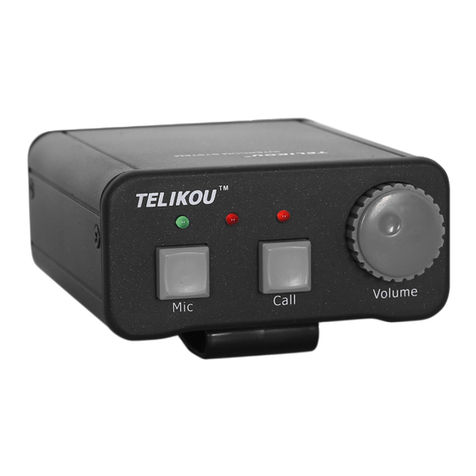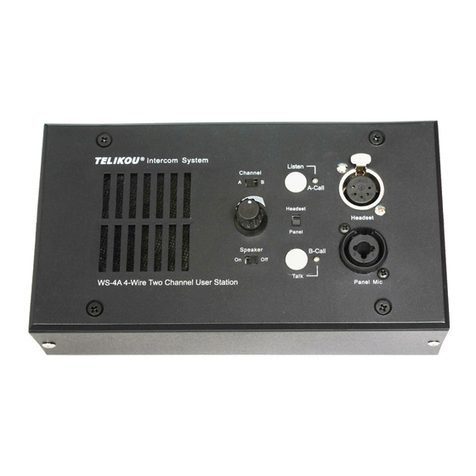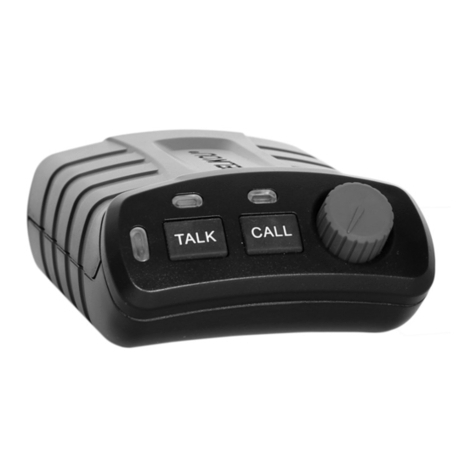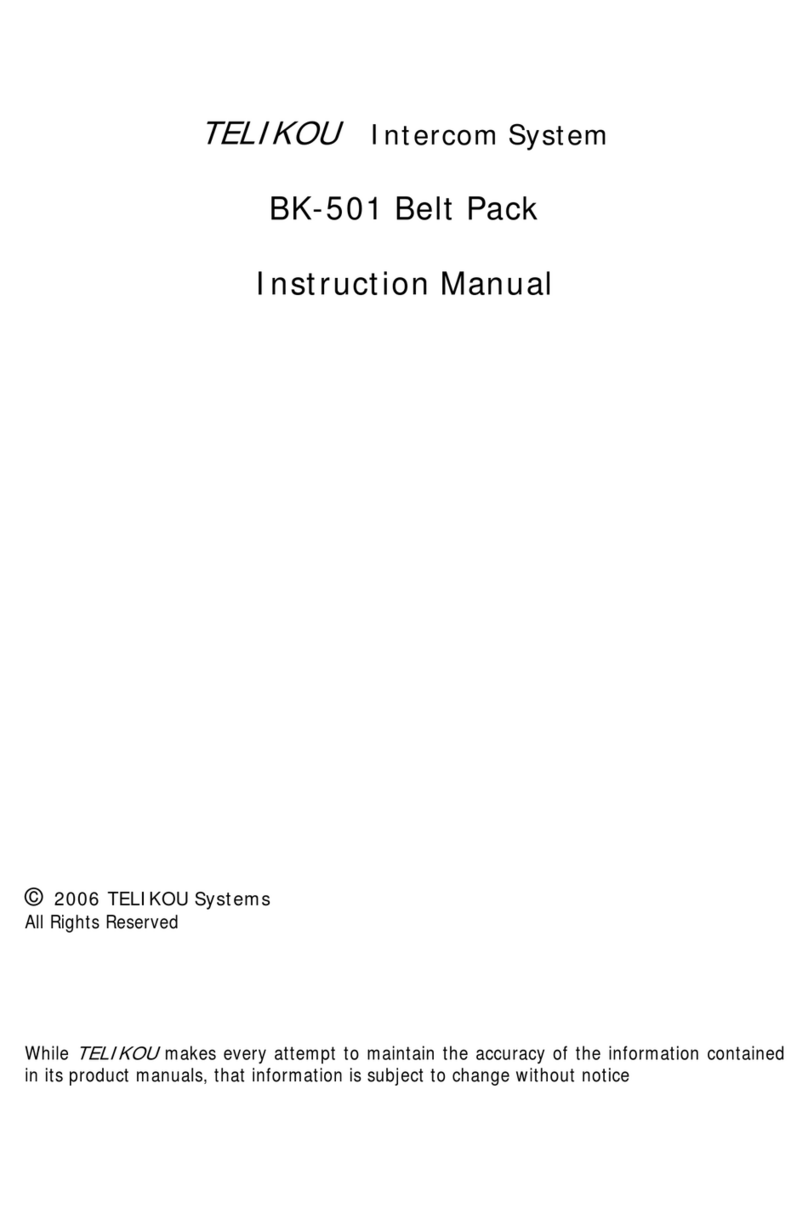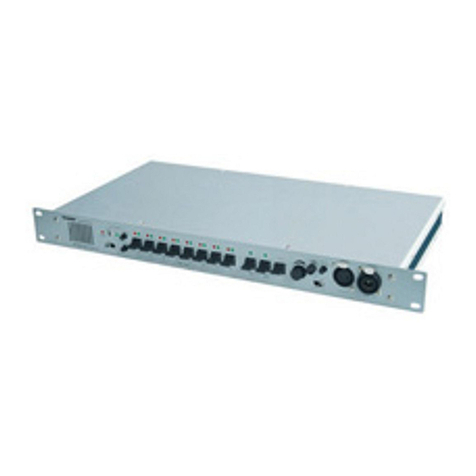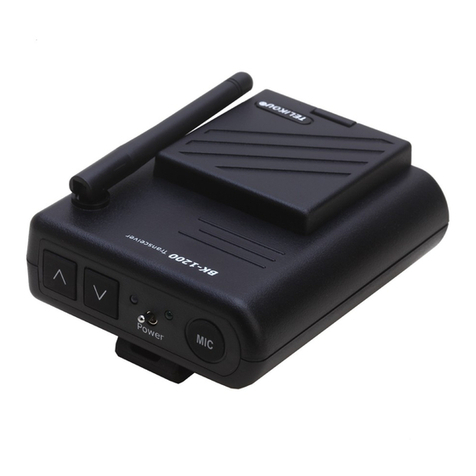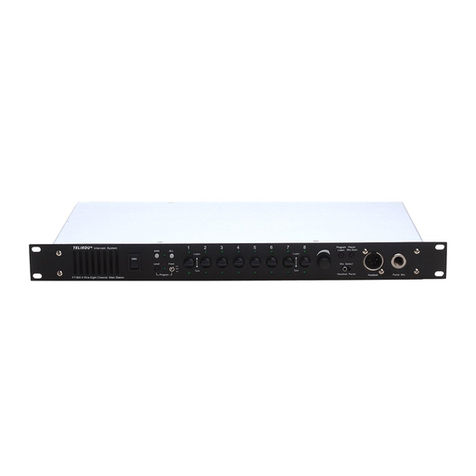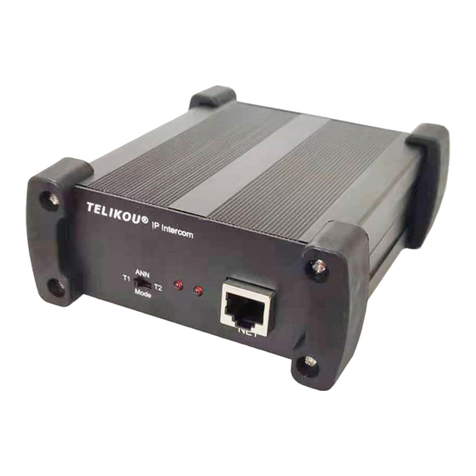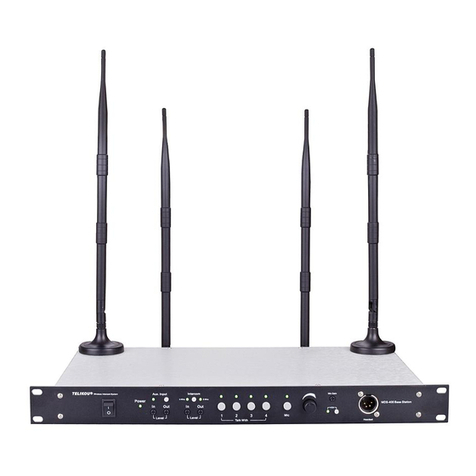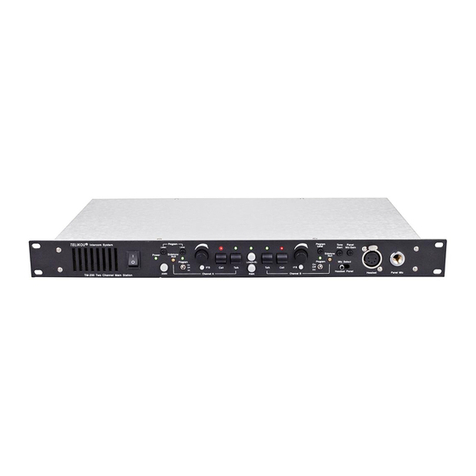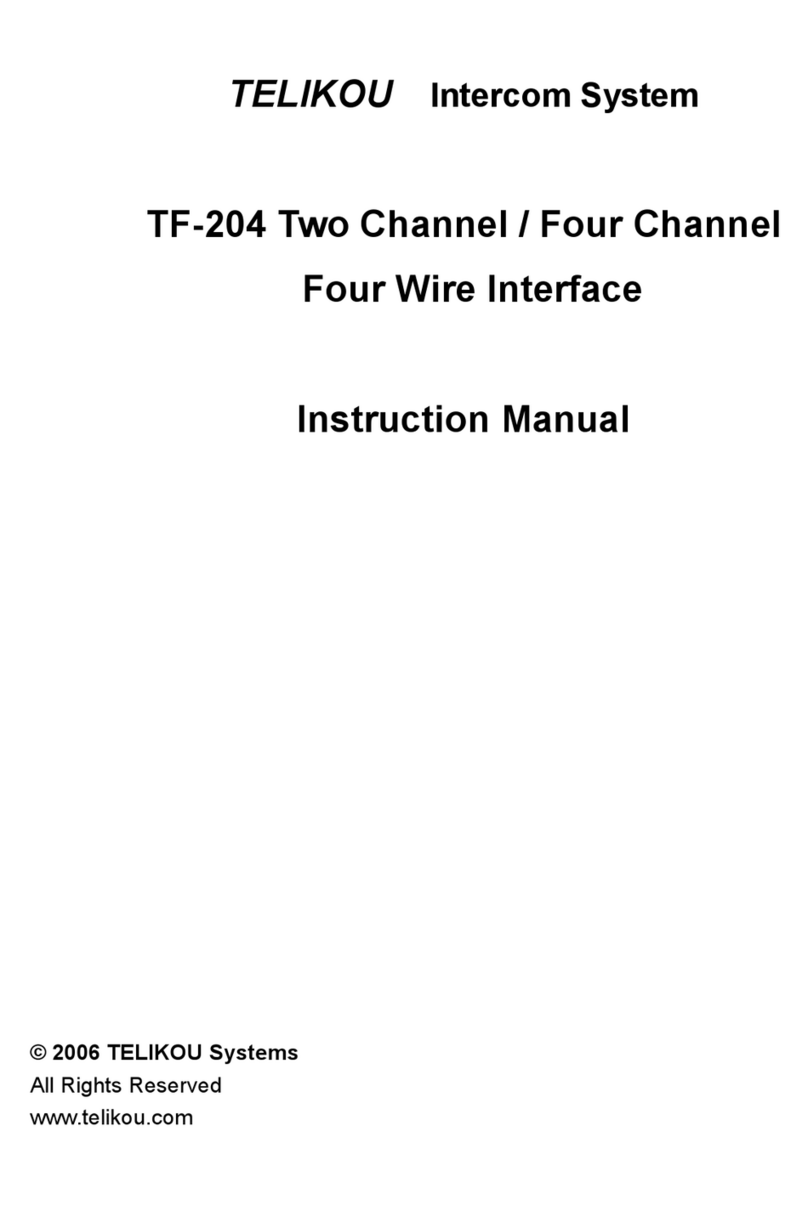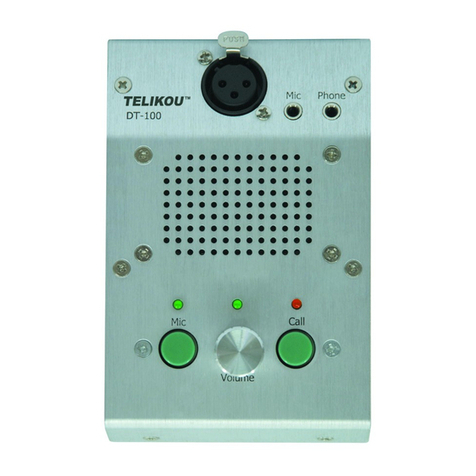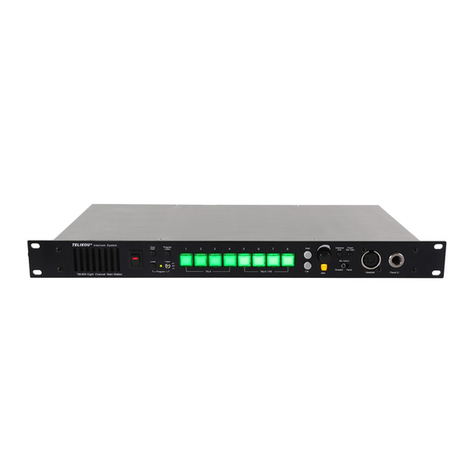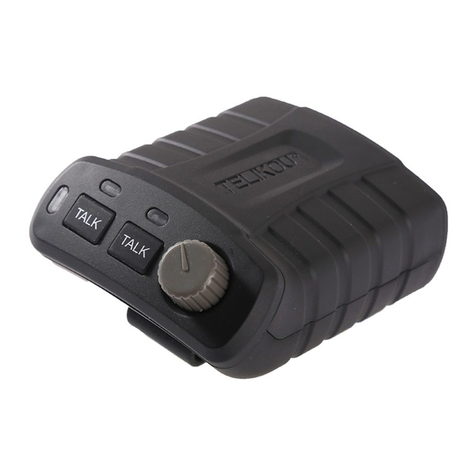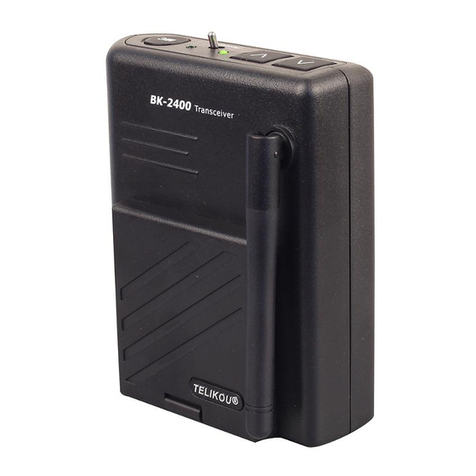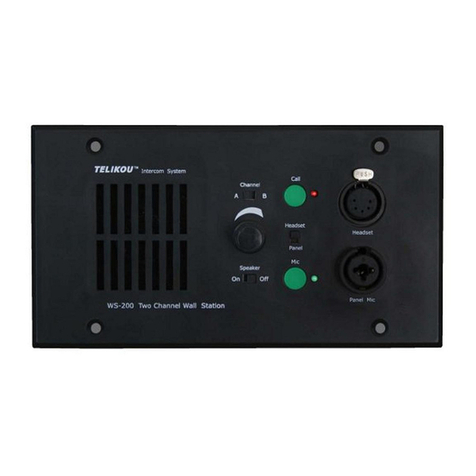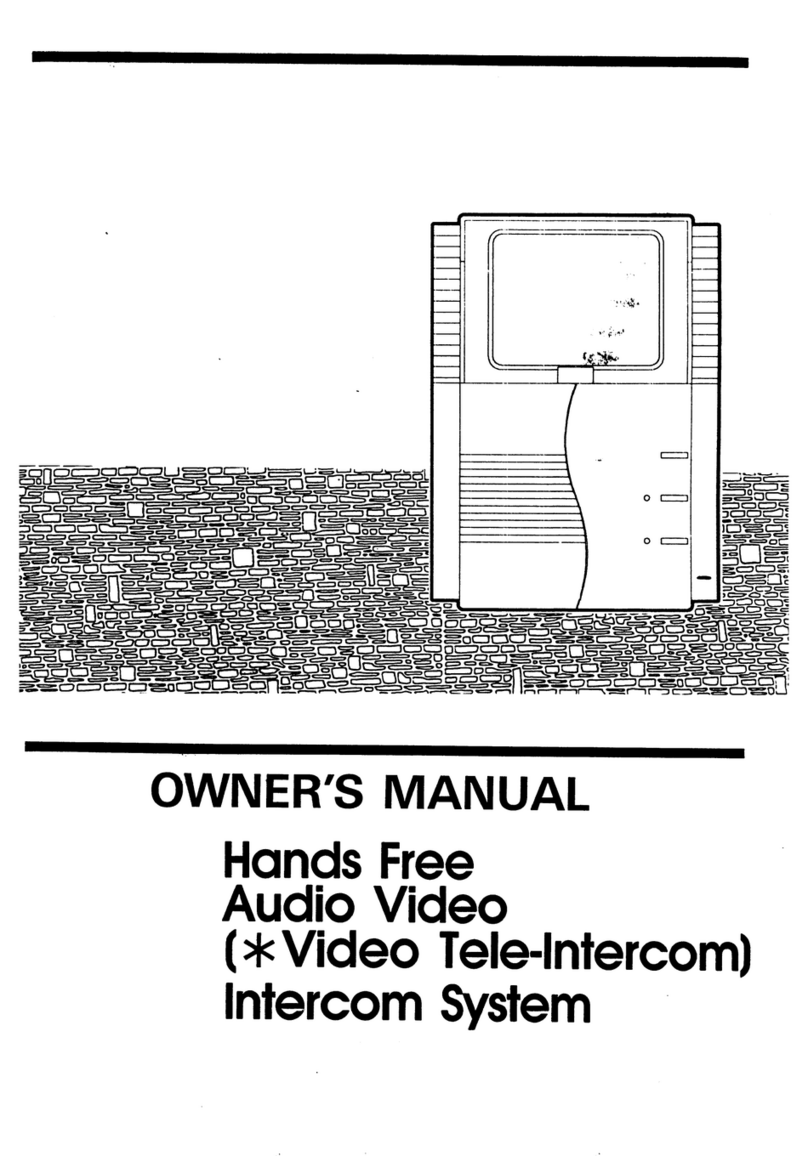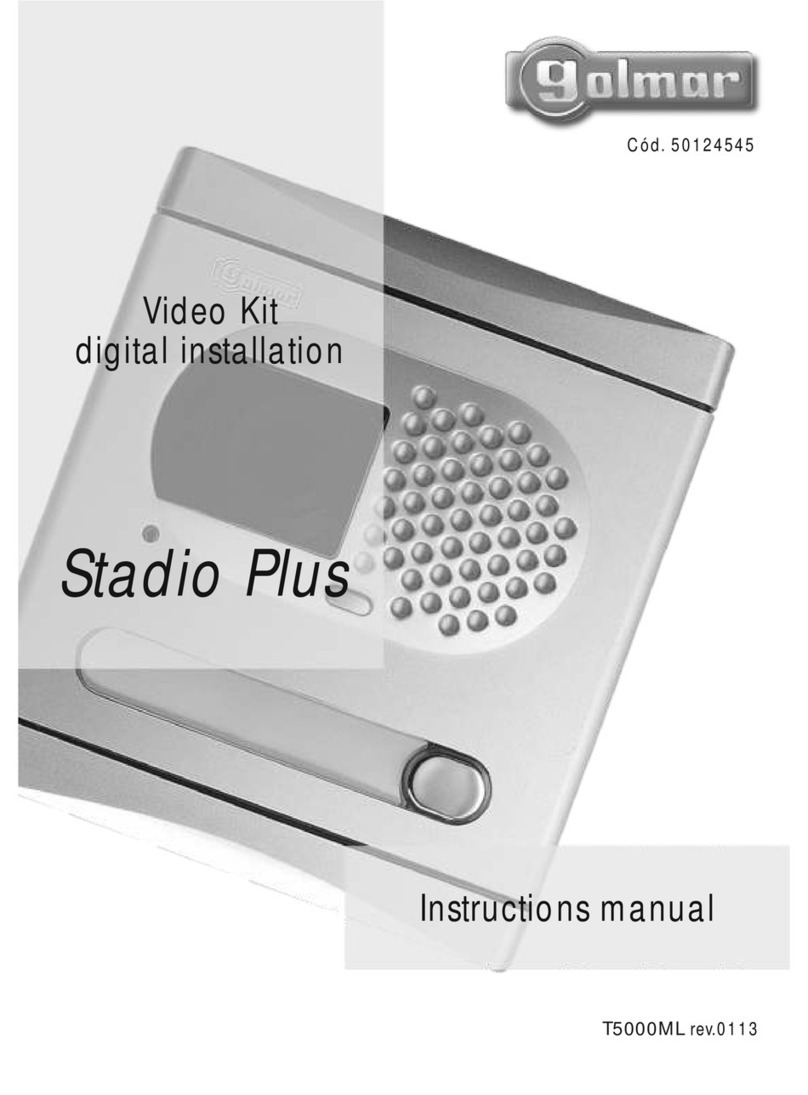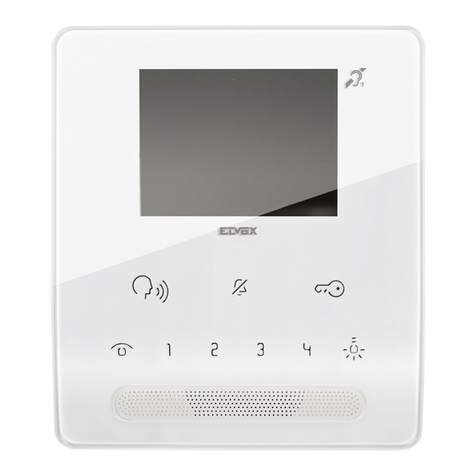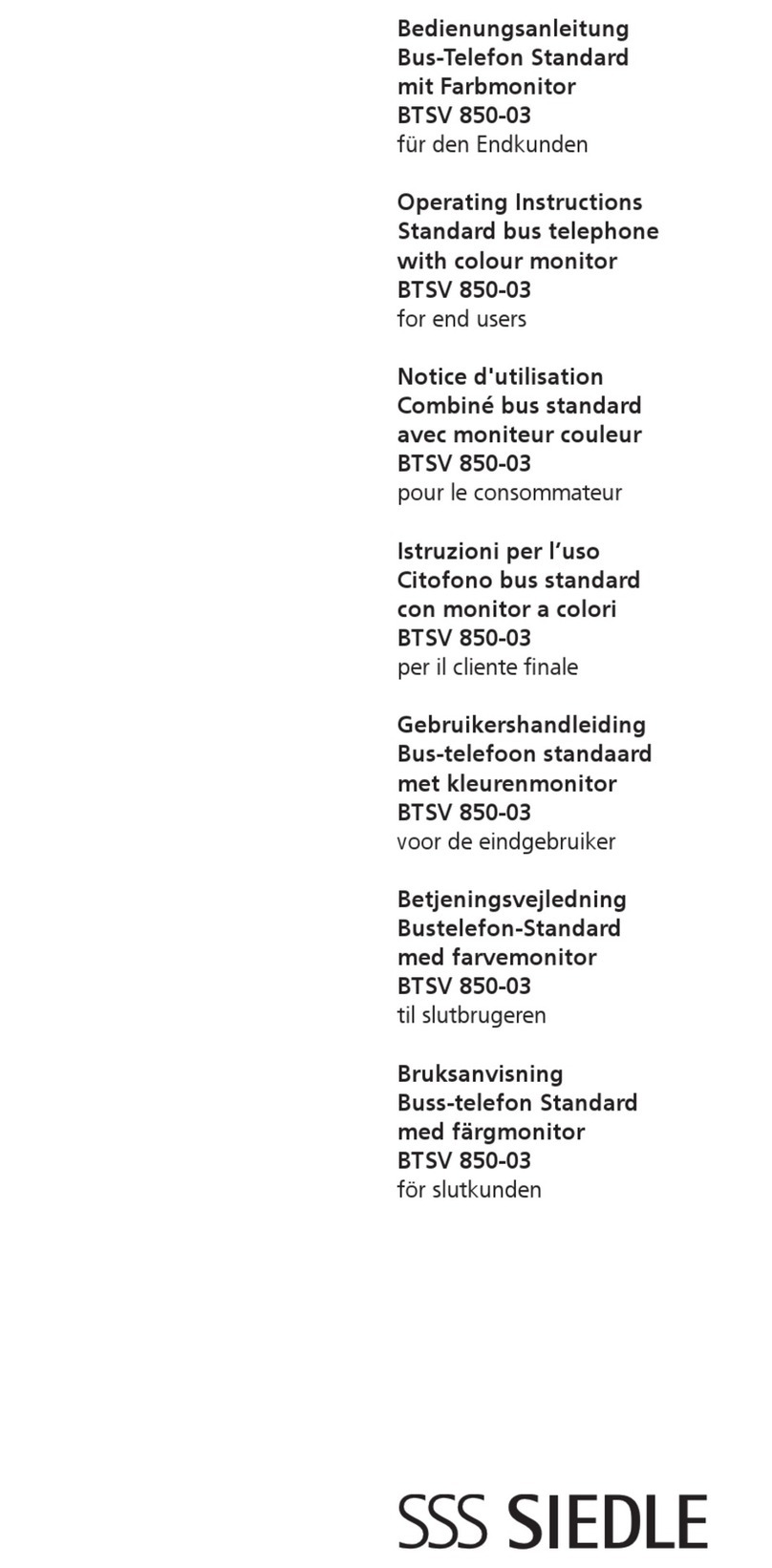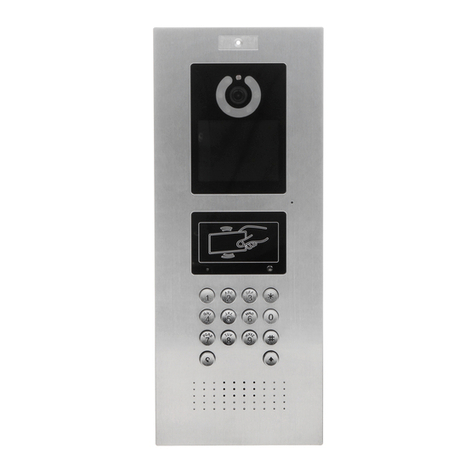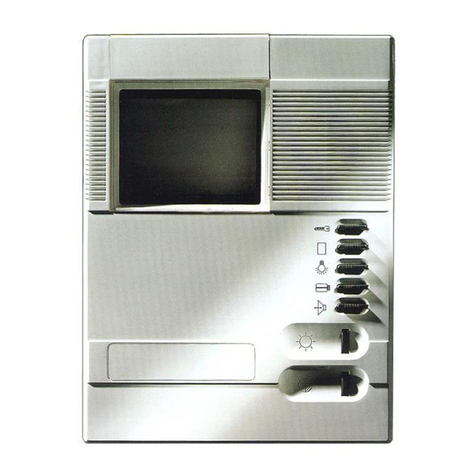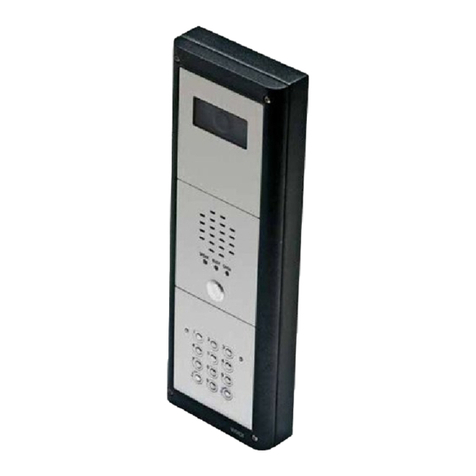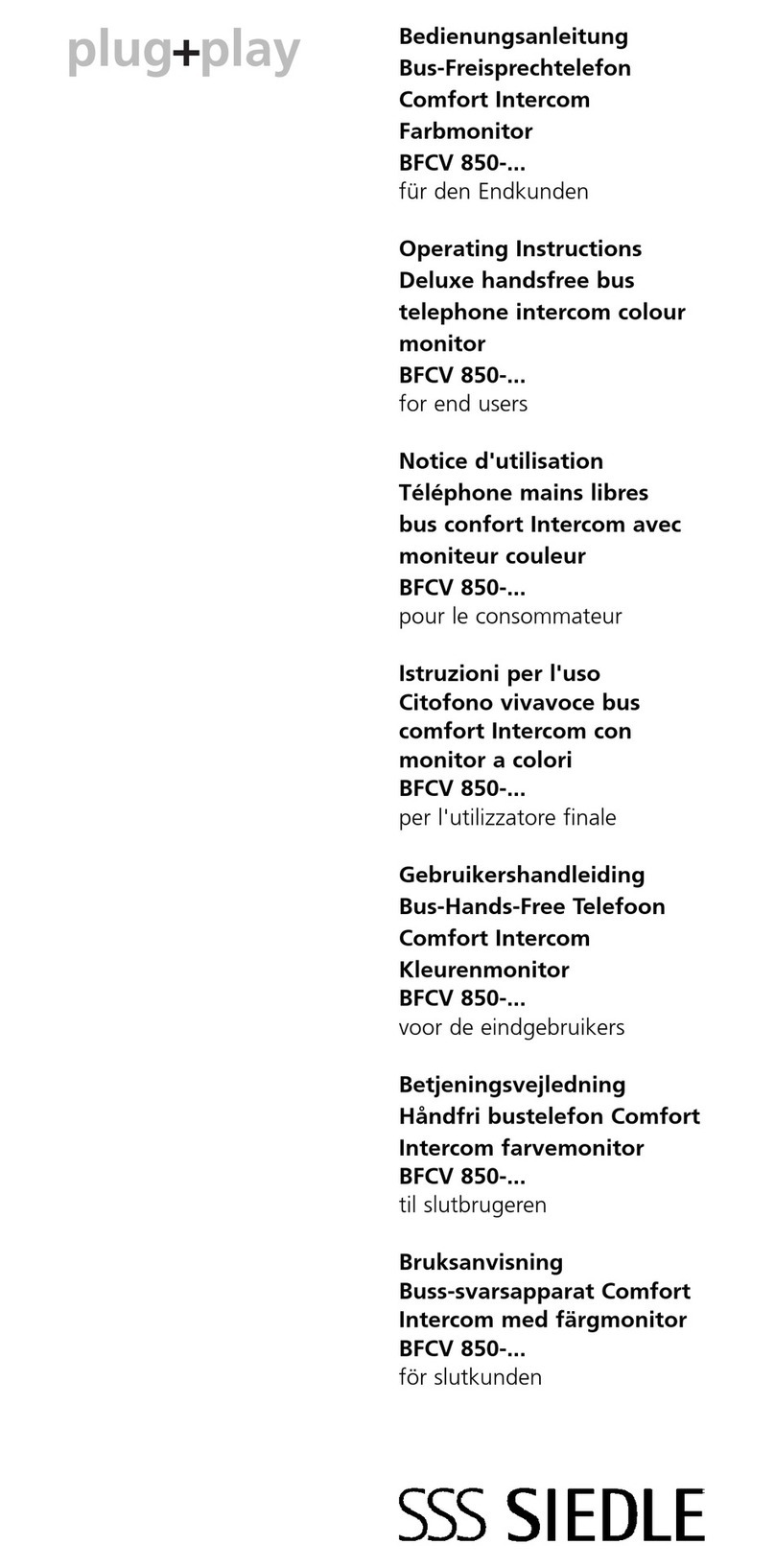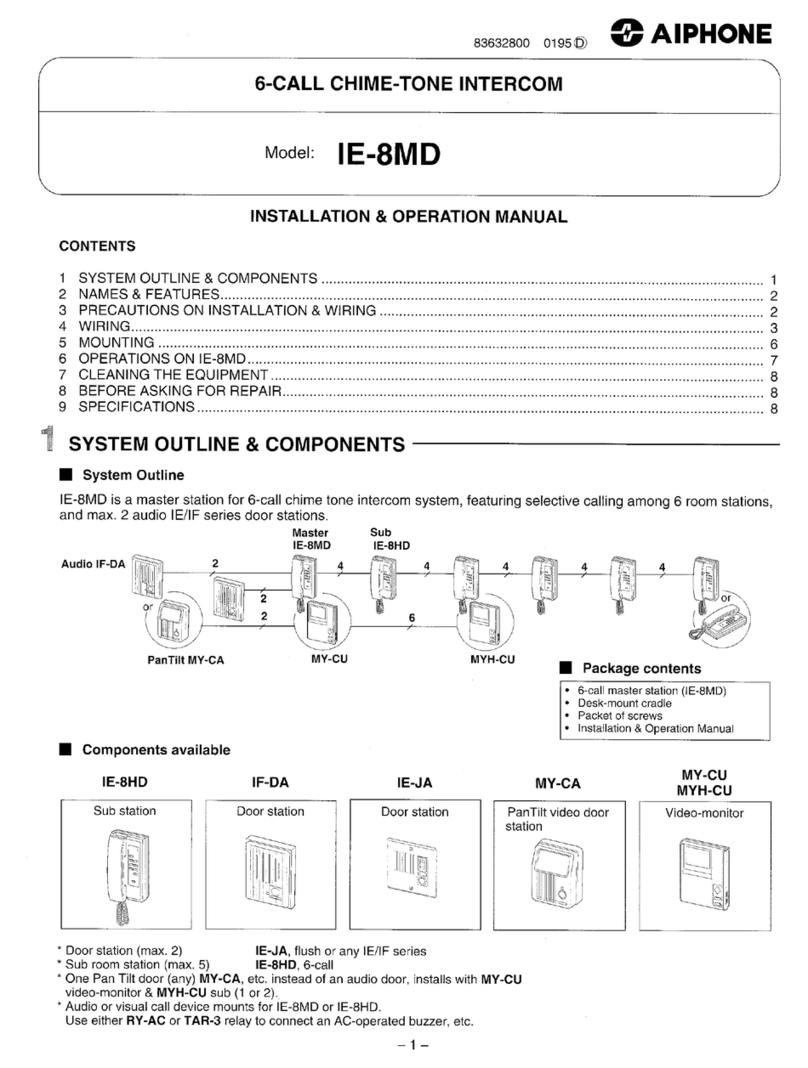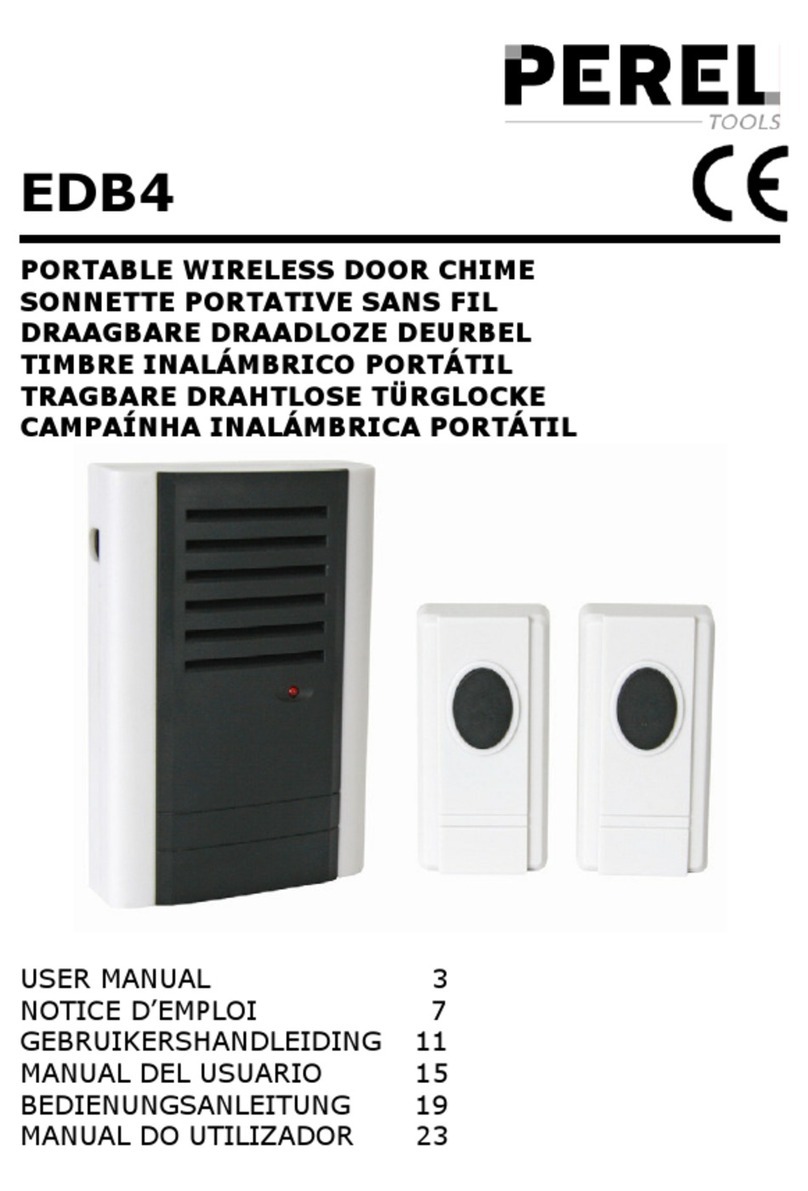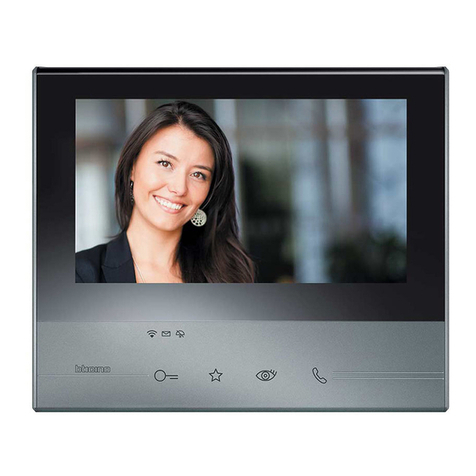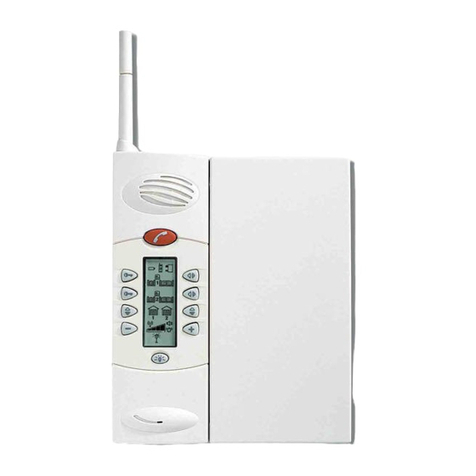Pin 3 --- Audio
Pin 4 --- Tally light drive signal output (Green)
Pin 5 --- Tally light drive signal output (Red)
30) Tally light external control signal connector (Tally In)
The definition of DB9 is as follow:
Pin 1 --- connect to pin 4 of CH1 XLR-5 internal
Pin 2 --- connect to pin 5 of CH1 XLR-5 internal
Pin 3 --- connect to pin 4 of CH2 XLR-5 internal
Pin 4 --- connect to pin 5 of CH2 XLR-5 internal
Pin 5 --- connect to pin 4 of CH3 XLR-5 internal
Pin 6 --- connect to pin 5 of CH3 XLR-5 internal
Pin 7 --- connect to pin 4 of CH4 XLR-5 internal
Pin 8 --- connect to pin 5 of CH4 XLR-5 internal
Pin 9 --- output 12VDC, current less than 5mA
The external TALLY light control sent the 12VDC on DB9-9 to other 1-8 Pin. It makes a TALLY drive
voltage on Pin4 and 5 of XLR-5F on 4 channels. This voltage drives TALLY light on belt pack.
31) AC Power Connection
Input 85V-265V, 50-60Hz AC, and the power consumption is less than 45VA.
IV Intercom Cable
1. Rules for cable selection
PL intercom system adopts two-core shielded audio cable, one core is used for audio signal
transmission, another core is used for DC power, and the shielded layer is used as common line for
audio and power supply. The channel with Tally light uses four core shielded cable, the added two
cores are used for transmitting Tally light drive signal. To decrease resistance of common line and
crosstalk interference, the cable with larger cross section area should be used. When it is been set
fixed, the cross section area of single line should be at least 1.5mm2, as mobile using, the cross
section area of single line should be at least 0.75mm2. The cable is longer, the cross section area
should be larger. If any spare core, it is recommended to be used as common line.
2. Cable Connection
A. A pair of XLR-5 connectors is put on each end of four-core shield cable, one end is XLR-5M and
another end is XLR-5F. The connector wiring is as follows:
Pin 1 --- Common (Shield)
Pin 2 --- Power (+24 VDC)
